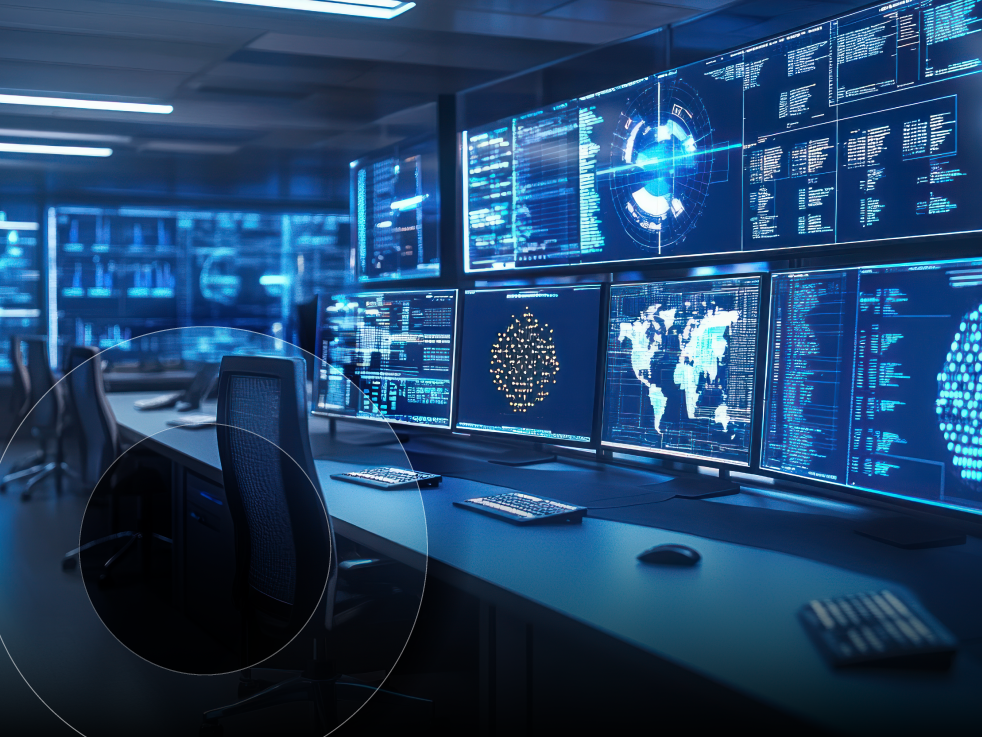The dual nature of generative AI: A powerful game-changer in cybersecurity:
Friend or foe? Generative AI is your ally in the threat landscape.

Generative AI is rapidly transforming the cybersecurity landscape. From widespread adoption and market growth to an impact on security teams, practices, and initiatives, this technology is becoming a crucial tool in your cyber defense.
“91% of security teams use generative AI, but 65% say they don’t fully understand the implications,” according to Splunk’s State of Security 2024: The Race to Harness AI report. The research also found 44% of respondents rank generative AI as a top initiative in 2024, surpassing cloud security.
The market for AI in cybersecurity is projected to grow from around $30 billion in 2024 to approximately $134 billion by 2030, according to Statista. This growth offers both opportunities and challenges for small- to medium-sized businesses and enterprise organizations alike. It’s essential to understand how generative AI can be harnessed to enhance security measures while addressing possible risks. Let’s explore how generative AI is changing cybersecurity and how to utilize this technology to protect your organization from potential threats.
The dual nature of generative AI
Generative AI is a field within artificial intelligence dedicated to creating new data from existing datasets. This advanced technology supports numerous applications, including data retrieval and analysis, content creation, and summarization, among many others.
Complex and powerful in nature, generative AI has a dual role in cybersecurity. “While generative AI is a powerful tool, it’s also a double-edged sword. Just as it can help strengthen defenses, it can also be used by cybercriminals to craft more sophisticated attacks,” summarized Duality.
On one hand, it empowers security teams by automating routine tasks, enhancing threat detection, and improving incident response. By leveraging deep learning models, generative AI can simulate advanced attack scenarios, which is crucial for testing and strengthening security systems.
This proactive approach allows organizations to stay ahead of potential attackers by continuously learning from new data and adapting to emerging threats. “As cyber threats become more sophisticated, generative AI’s adaptive and proactive nature becomes increasingly critical in maintaining the integrity and resilience of cybersecurity infrastructures,” according to Palo Alto Networks.
On the other hand, generative AI also poses significant risks. Cybercriminals are increasingly using generative AI technology to create sophisticated threats, such as malware and phishing scams, at scale. Cyberattacks continue to grow relentlessly. This dual nature requires organizations to implement robust ethical standards and defense mechanisms to mitigate misuse and combat threat actors.
Start with a strategic approach
To effectively integrate generative AI into a cybersecurity strategy, your organization must first embrace a collaborative partnership between your people and your machines or technology. This involves understanding generative AI’s capabilities and establishing trust in its impact through proper governance and strategic implementation. Organizations should focus on three key areas to get started.
1. Risk modeling and assessment scoring
Identify and understand potential risks and vulnerabilities, enabling organizations to score them and essentially prioritize what to do next.
2. Incident response
Develop automated incident response strategies that leverage generative AI’s capabilities for rapid threat identification and mitigation.
3. Upskilling talent
Invest in training cybersecurity professionals to work alongside generative AI technologies, ensuring they can navigate the evolving threat landscape effectively.
Enhance cybersecurity with generative AI
Generative AI offers several benefits that can significantly improve your security posture. Perhaps one of the most impactful advantages, generative AI can identify patterns indicative of cyber threats; this proactive threat detection enables security systems to respond more rapidly and effectively than traditional methods.
With near real-time incident analysis capabilities, generative AI makes investigations more efficient and speeds up risk assessments, according to Deloitte’s The CISO’s Guide to Generative AI. It can also minimize false positives in threat detection systems, ensuring security teams can focus on genuine threats.
Its ability to automate security measures is another game-changer. Generative AI streamlines cybersecurity by automating routine tasks like configuring firewalls or scanning for vulnerabilities, freeing your most valuable resources (humans) for more complex issues. Imagine automated security incident response, better data classification and monitoring, enhanced systems design and configuration, and personalized training and awareness – and these are just a few facets of the vast array of capabilities generative AI offers.
Generative AI can also help you prepare for the worst. The technology can simulate various types of cyberattacks to test and strengthen your security measures. And by simulating social engineering attacks like phishing emails, generative AI helps you develop better defenses against malicious tactics.
Wield the power of generative AI with SHI
Generative AI has the power to transform and enhance your cybersecurity posture. By strategically implementing generative AI technologies and fostering a collaborative environment between human expertise and machine intelligence, you can harness its full potential – including safeguarding against emerging threats. As cyber threats become more sophisticated, the adaptive nature of generative AI will be increasingly critical in maintaining the integrity and resilience of your security infrastructure.
Whether you’re well along your way or just starting your AI journey, our experts can support where you are and guide you through each step. Test your generative AI use cases, apps, and infrastructure options first-hand at SHI’s AI & Cyber Labs. Leverage our sandbox for validating AI solutions with your actual data, workloads, and integration requirements across leading platforms.
Let our AI experts assess your needs and help you identify use cases through our program and platform briefings, AI Readiness Assessment, Security Posture Review (SPR), and more. Chart your course by following SHI’s blueprints for success, minimizing the risks and costs of deploying AI while maximizing results with our framework.
Our comprehensive AI solutions and services ensure your organization is on the right path when it comes to generative AI, from AI-optimized infrastructure, security, and PCs, to deployment and adoption services, funding programs, and scalable AI architectures. Not sure where to start? Book an AI Executive Review to connect with our experts for a thorough review of best practices, strategies, and next steps.
Generative AI has limitless potential, and while cyber criminals will exploit its abilities, you’re not alone. Wield its power to strengthen your cybersecurity defenses and stay ahead of attacks.




